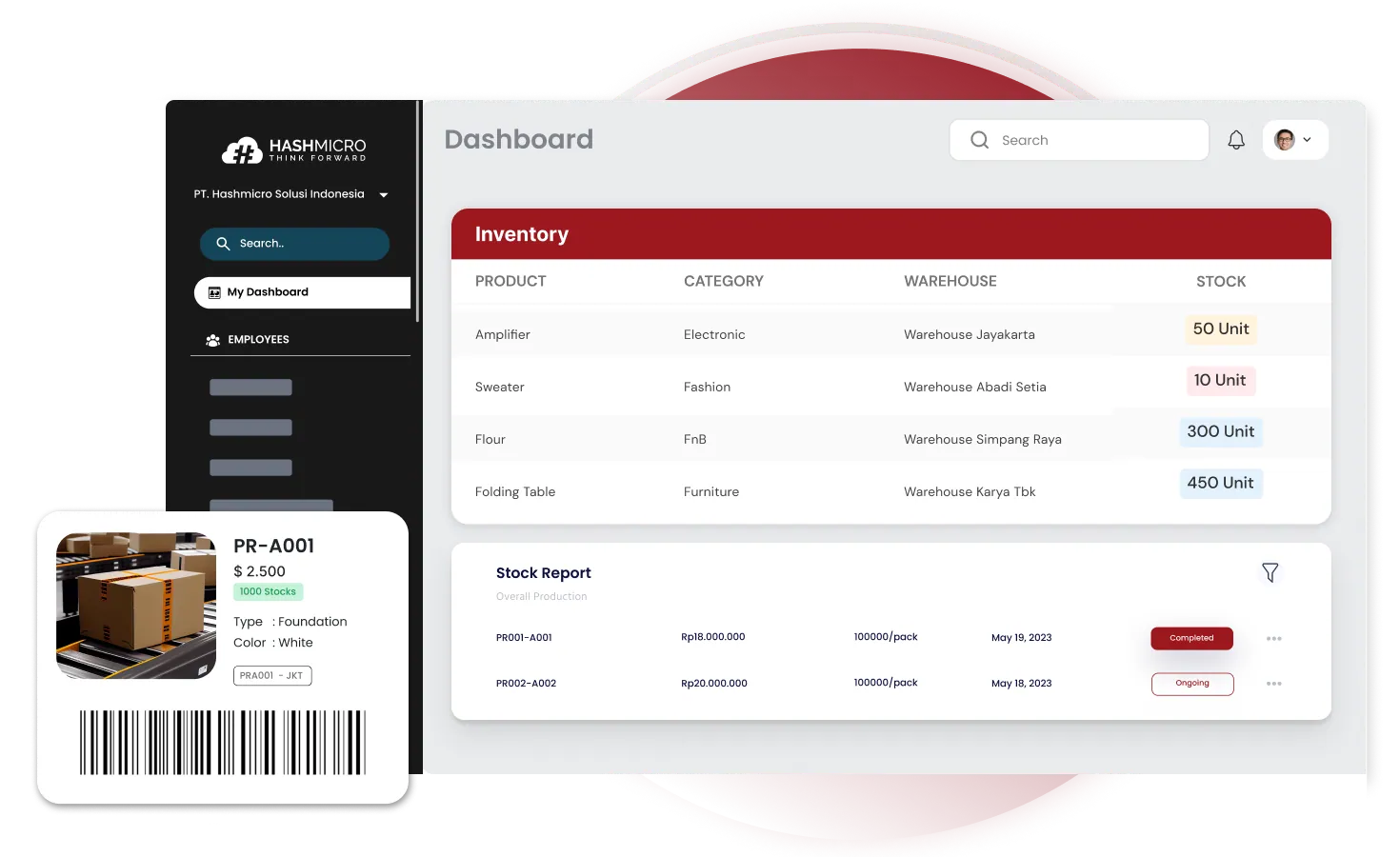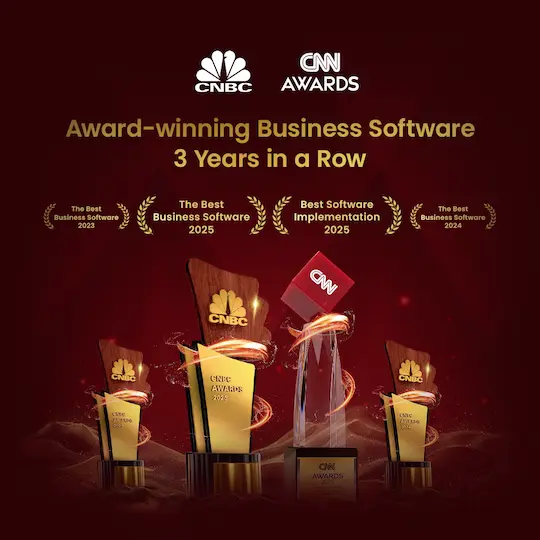Inventory carrying cost is the total expense of holding inventory, including capital, storage, insurance, and obsolescence costs. It’s essentially the price paid to maintain unsold goods.
Inventory carrying cost is a crucial metric for businesses, affecting both profitability and operational efficiency. Understanding and managing this cost is vital for maintaining a healthy balance between stock availability and expense control.
In Singapore, where business operations are fast-paced and space is at a premium, effective inventory management becomes even more critical. Implementing an advanced Inventory Management System can play a significant role in controlling these costs, ensuring that your business remains competitive.
Key Takeaways
|
Warning: Undefined array key "med" in /home/hashmicr/public_html/blog/wp-content/plugins/insert-headers-and-footers/includes/class-wpcode-snippet-execute.php(419) : eval()'d code on line 281

What is Inventory Carrying Cost?

Inventory carrying cost refers to the total expense associated with holding inventory over time. This includes costs related to capital, storage, insurance, and obsolescence. In simple terms, it’s the price businesses pay to store and maintain unsold goods.
Effective inventory management reduces costs and improves financial performance. Understanding carrying cost components enables businesses to cut unnecessary expenses. Using an Inventory Management System helps in tracking and managing these costs effectively.
The system provides real-time data on inventory levels, ensuring that businesses can make informed decisions about stock replenishment, storage, and sales strategies. By integrating IMS into daily operations, companies can minimize excess inventory, thereby reducing carrying costs.
The Importance of Inventory Carrying Costs
Managing inventory carrying costs is critical because it directly impacts profit margins. High carrying costs can eat into profits, especially in industries with thin margins. For businesses in Singapore, where space and resources are at a premium, understanding these costs is even more crucial.
A well-managed inventory carrying cost can lead to more efficient use of capital and resources, ultimately contributing to the business’s bottom line. Moreover, controlling these costs allows businesses to be more flexible and responsive to market changes.
For example, companies that efficiently manage their inventory carrying costs can quickly adapt to shifts in consumer demand without incurring excessive expenses. This agility is particularly valuable in Singapore’s dynamic market, where consumer preferences can change rapidly.
An Inventory Management System supports this agility by providing accurate demand forecasts and automating the replenishment process. Another important aspect of inventory carrying costs is their impact on cash flow.
Tying up too much capital in inventory can limit a company’s ability to invest in other areas, such as marketing, research and development, or expanding operations. By reducing carrying costs with the help of an Inventory Management System, businesses can free up cash for other critical activities that drive growth.
Also read: Inventory Aging Report: What is it and How to Calculate It
Components of Inventory Carrying Cost

Inventory carrying costs consist of several components, each contributing to the total cost of holding inventory.
Capital Costs and Their Impact
Capital cost is one of the primary components of inventory carrying cost. It represents the opportunity cost of investing in inventory instead of other potential investments. The capital tied up in inventory could otherwise be used to grow the business, fund other operations, or earn interest in a financial institution.
In a highly competitive market like Singapore, where capital is a scarce resource, businesses must be strategic about how they allocate their funds. Every dollar spent on holding inventory is a dollar that could have been invested elsewhere.
Therefore, reducing capital costs is not just about saving money—it’s about making smarter business decisions that enhance profitability and long-term success. An Inventory Management System can help by providing insights into the optimal inventory levels needed to meet demand without overinvesting in stock.
Understanding Inventory Service Costs
Inventory service costs include expenses related to insuring and managing inventory, such as taxes and insurance premiums. These costs are ongoing as long as the inventory is held and can vary depending on the type of goods stored and the specific requirements of the business.
In Singapore, where regulatory requirements are stringent, businesses must also factor in compliance costs as part of their inventory service costs. These could include expenses related to adhering to local regulations on storage, safety, and environmental impact.
Failure to comply with these regulations can result in fines or other penalties, further increasing the cost of carrying inventory. An Inventory Management System can automate compliance tracking and ensure that all inventory handling meets regulatory standards.
Risk Factors Contributing to Inventory Costs
Inventory risk cost covers potential losses from obsolete, damaged, or stolen goods. As inventory sits in storage, its value may decrease due to market changes, technological advancements, or physical degradation. Managing these risks effectively is crucial to minimizing unnecessary expenses.
For example, in the technology sector, products can quickly become obsolete as new models are introduced. Businesses must be vigilant about inventory turnover to ensure they are not left with outdated stock that is difficult to sell.
Implementing an effective Inventory Management System in Singapore can help companies track product lifecycles and reduce the risk of obsolescence. Additionally, the system can alert businesses to slow-moving items, enabling them to take timely action, such as discounting or bundling products, to clear out inventory before it loses value.
The Role of Storage Space Costs
Storage costs are the expenses related to the physical space where inventory is kept. In a logistics hub like Singapore, where real estate costs are high, these expenses can be significant. Costs include rent, utilities, and maintenance of the storage facilities. Optimising storage space is essential to keeping these costs in check.
Businesses can reduce storage costs by using off-site warehousing, vertical storage, or consolidating locations. An Inventory Management System can assist in this by providing detailed reports on storage utilization, helping businesses identify areas where space can be optimized.
Additionally, by reducing excess stock through better inventory management, companies can minimize the need for large storage spaces, thereby lowering costs. By implementing an advanced Inventory Management System, businesses can significantly reduce storage costs while optimizing their overall inventory management.
These systems offer scalable solutions tailored to your business needs, ensuring you only pay for what you use. Interested in learning more about pricing schemes? the flexible plans are designed to fit businesses of all sizes. Click the banner below to explore the pricing schemes and find the perfect fit for your company.
How to Calculate Inventory Carrying Cost
Calculating inventory carrying costs requires a clear understanding of all the associated expenses. Here’s how businesses can accurately calculate these costs.
Step-by-Step Guide to Calculating Inventory Costs
- Identify all relevant costs: This includes capital cost, storage costs, service costs, and risk costs.
- Sum the annual costs: Add up all the costs associated with holding inventory for one year.
- Divide by average inventory value: Calculate the carrying cost percentage by dividing the total annual costs by the average inventory value and multiplying by 100.
This calculation provides businesses with a clear understanding of the cost of holding inventory over time. It also highlights areas where costs can be reduced, such as by improving storage efficiency or negotiating better insurance rates.
An Inventory Management System can simplify this calculation by automatically aggregating cost data and providing real-time insights into inventory expenses.
Common Formulas for Inventory Cost Calculation
The most common formula used for calculating inventory carrying cost is:
Carrying Cost Percentage=

Example Scenarios for Different Industries
In retail, carrying costs might be higher due to fast-moving consumer goods that quickly become obsolete. In manufacturing, these costs could be lower, especially if the inventory consists of raw materials with a longer shelf life. Each industry will have different inventory management strategies based on their carrying costs.
For instance, a Singaporean electronics retailer might face higher carrying costs due to the rapid pace of technological advancement. In contrast, a local manufacturer of building materials may have lower carrying costs, as these products tend to have a longer shelf life and are less susceptible to obsolescence.
An Inventory Management System can provide industry-specific analytics, helping businesses tailor their inventory strategies to their unique needs.
Strategies to Reduce Inventory Carrying Costs
Reducing inventory carrying costs is essential for maintaining profitability and operational efficiency. Here are some strategies businesses can adopt.
Efficient Inventory Management Techniques
Implementing an efficient inventory management system in Singapore is critical. Such systems help businesses track inventory levels in real-time, reducing the need for excess stock and minimizing storage costs. By automating inventory tracking, companies can also reduce the risk of human error, which can lead to overstocking or stockouts.
Moreover, an Inventory Management System can provide valuable insights into inventory turnover rates, helping businesses identify slow-moving products and adjust their purchasing strategies accordingly. This not only reduces carrying costs but also improves cash flow by ensuring that capital is not tied up in unsold goods.
Leveraging Technology for Cost Reduction
Using advanced Inventory Management Software and Logistics Management Software can significantly reduce carrying costs. These tools offer predictive analytics, which can help businesses forecast demand more accurately and avoid overstocking.
Additionally, these systems can integrate with other business processes, such as procurement and sales, to ensure a seamless flow of goods and information.
For businesses in Singapore, where space and labour costs are high, leveraging technology to streamline inventory management can result in substantial savings. By reducing the time and resources required to manage inventory, companies can focus on core business activities that drive growth and profitability.
Best Practices for Minimizing Storage Costs
Businesses can minimize storage costs by optimizing their use of space and regularly reviewing their inventory levels. Implementing just-in-time (JIT) inventory practices, where stock is ordered and received only when needed, can also reduce the need for large storage spaces.
Additionally, businesses can explore options such as outsourcing storage or sharing warehouse space with other companies to lower costs. An cloud based Inventory Management System can support these practices by providing real-time data on inventory levels and storage utilization.
This enables businesses to make informed decisions about when to reorder stock and how to allocate storage space effectively. By maintaining optimal inventory levels, companies can reduce the risk of overstocking and the associated storage costs.
Investing in a Comprehensive Inventory Management Solution
 To further optimize inventory management and reduce carrying costs, businesses can leverage an all-in-one inventory management system like HashMicro’s Inventory Management Software. This cloud-based solution offers real-time tracking and automated restocking to optimize inventory with minimal waste.
To further optimize inventory management and reduce carrying costs, businesses can leverage an all-in-one inventory management system like HashMicro’s Inventory Management Software. This cloud-based solution offers real-time tracking and automated restocking to optimize inventory with minimal waste.
By integrating seamlessly with procurement, sales, and accounting systems, HashMicro’s inventory solution enables businesses to improve efficiency, reduce storage costs, and enhance overall profitability. Get a free demo today to see how it works for your business.
Conclusion
Understanding and managing inventory carrying costs is key to maximizing profitability. By breaking them into capital, service, risk, and storage components, businesses can allocate resources efficiently. Leveraging technology helps minimize these costs, giving businesses in Singapore a competitive edge for long-term growth.
Using technology, such as HashMicro’s Inventory Management Software, can significantly streamline your inventory processes, reducing carrying costs while enhancing operational efficiency. Designed for businesses in Singapore, it offers real-time insights, predictive analytics, and seamless integration with other systems.
You can try for a free demo today by clicking the banner below and discover how Inventory Management Software can take your business to the next level.
Warning: Undefined array key "med" in /home/hashmicr/public_html/blog/wp-content/plugins/insert-headers-and-footers/includes/class-wpcode-snippet-execute.php(419) : eval()'d code on line 281

Frequently Asked Questions
-
What is the formula for inventory carrying cost in EOQ?
To calculate inventory carrying cost in EOQ, divide the total inventory holding cost by the total value of inventory and multiply by 100 to get the percentage. The total inventory value is calculated by multiplying the cost per unit by the available stock.
-
What are the four inventory cost methods?
The four primary inventory valuation methods are FIFO (First-In, First-Out), LIFO (Last-In, First-Out), Specific Identification, and Weighted Average Cost.
-
What is the most common inventory cost flow method?
The most commonly used inventory cost flow method is the First-In, First-Out (FIFO) method. This approach assumes that the earliest items purchased or produced are the first to be sold, which aligns well with the natural flow of goods, particularly in industries where products have a limited shelf life.
































